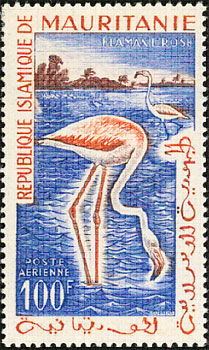Parc National du Diawling, with an area of 15,600 ha, lies in the lower delta of the Senegal River in Mauritania. It is a saline floodplain dotted with marsh-pools and sand dunes. The site includes three coastal lagoons and an estuarine zone of mangroves providing feeding grounds for fish, shrimp, and prawns.
Together with the Senegalese part of the delta, where the Parc National des Oiseaux du Djoudj is situated, this area provides an important feeding and watering site for numerous waterfowl. The mangrove swamp supports breeding colonies of Purple Heron (Ardea purpurea), Black-crowned Night Heron (Nycticorax nycticorax), African Spoonbill (Platalea alba), Great Cormorant (Phalacrocorax carbo) and Great White Pelican (Pelecanus onocrotalus). Small numbers of bustards, guinea fowl, ducks, geese, swans and francolins are also present.
Created in 1991, the Parc National du Diawling is a unique example of the reconstruction of a natural environment. In order to simulate the hydrology of the lower delta before water of the Senegal River was impounded behind dams, the Parc National du Diawling has installed, with the involvement of the local population, six hydraulic structures (two for water supply, and four two-way structures) and dikes that make it possible to divide the park into three great basins Diawling, Bell and Gambar. The water level has to be monitored to ensure that it does not fluctuate greatly from year to year.
Mammals in the park include warthogs, jackals and patas monkeys. The last gazelles have disappeared recently.
Human activities include controlled traditional gathering, harvesting, fishing, and grazing.
The stated aims of Diawling National Park are to preserve and ensure the sustainable use of natural resources of a part of the lower Senegal delta ecosystem, to promote the continuous and harmonious development of the range of activities of the local population to coordinate pastoral and fishing activities within its boundaries. (IUCN)
Ramsar site no. 666.
The Convention on Wetlands came into force for Mauritania on 22 February 1983. Mauritania presently has 3 sites designated as Wetlands of International Importance, with a surface area of 1,231,100 hectares: Banc d’Arguin, Parc National du Diawling, and Chat Tboul.
References: Ramsar Convention on Wetlands http://www.ramsar.org/ram/ram_rpt_42e.htm
http://www.ramsar.org/profile/profiles_mauritania.htm
Waterbirds Around the World http://www.jncc.gov.uk/PDF/pub07_waterbirds_part5.4.6.pdf
African Bird Club http://www.africanbirdclub.org/countries/Mauritania/hotspots.html
IUCN Wetlands and Water resources Programme http://www.iucn.org/dbtw-wpd/edocs/WTL-029.pdf


